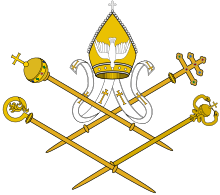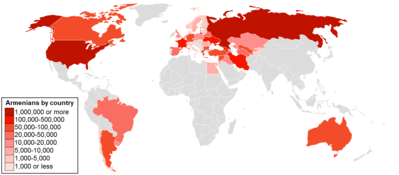Armenian Catholic Church
The Armenian Catholic Church (Armenian: Հայ Կաթողիկէ Եկեղեցի, romanized: Hay Kat’ołikē Ekełec’i; Latin: Ecclesia armeno-catholica) is one of the Eastern particular churches sui iuris of the Catholic Church. They accept the leadership of the Bishop of Rome, known as the papal supremacy, and therefore are in full communion with the Catholic Church, including both the Latin Church and the 22 other Eastern Catholic Churches. The Armenian Catholic Church is regulated by Eastern canon law, namely the Code of Canons of the Eastern Churches.
Armenian Catholic Church | |
|---|---|
| Armenian: Հայ Կաթողիկէ Եկեղեցի | |
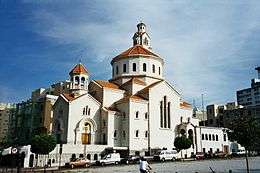 Cathedral of Saint Elias and Saint Gregory the Illuminator in Beirut, the cathedra of the Armenian Catholic Patriarchate of Cilicia. | |
| Classification | Eastern Catholic |
| Orientation | Eastern Christianity (Armenian) |
| Theology | Catholic theology |
| Polity | Episcopal |
| Pope | Francis |
| Patriarch | Krikor Bedros XX Gabroyan |
| Region | Armenian diaspora |
| Language | Armenian |
| Liturgy | Armenian Rite |
| Headquarters | Cathedral of St Elias and St Gregory the Illuminator, Beirut, Lebanon |
| Founder | Abraham Petros I Ardzivian |
| Origin | 1742 Ottoman Empire (modern Armenia) |
| Members | 150,000 (independent estimates)[1][2] 757,726 (2017 Annuario Pontificio)[3] |
| Official website | www |
| Part of a series on |
| Particular churches sui iuris of the Catholic Church |
|---|
Latin cross and Byzantine Patriarchal cross |
| Particular churches are grouped by rite. |
| Alexandrian Rite |
| Armenian Rite |
| Byzantine Rite |
| East Syriac Rite |
| Latin liturgical rites |
| West Syriac Rite |
|
|
The head[4][5] of the sui iuris Armenian Catholic Church is the Armenian Catholic Patriarch of Cilicia, whose main cathedral and de facto archiepiscopal see is the Cathedral of Saint Elias and Saint Gregory the Illuminator, in Beirut, Lebanon.
History
The 451 Council of Chalcedon caused problems for the Armenian Church which formally broke off communion with the Chalcedonian Churches at the 3rd Synod of Dvin in 610, some Armenian bishops and congregations especially the Church of Caucasian Albania made attempts to restore communion with the Chalcedonian Churches after the 6th Ecumenical Council of 681. During the Crusades, the Church of the Armenian kingdom of Cilicia entered into a union with the Catholic Church, an attempt that did not last. The union was later re-established during the Council of Florence in 1439, but did not have any real effects for centuries.
Some Armenians converted to Catholicism, and in the absence of any specific Armenian Catholic Church in effect became Latins. In Medieval China, Armenians in China were converted to Catholicism by John of Montecorvino in Beijing and there was also an Armenian Franciscan Catholic community in Quanzhou.
In 1740, Abraham-Pierre I Ardzivian, who had earlier become a Catholic, was elected as the patriarch of Sis. Two years later Pope Benedict XIV formally established the Armenian Catholic Church. In 1749, the Armenian Catholic Church built a convent in Bzoummar, Lebanon. During the Armenian Genocide in 1915–1918 the Church scattered among neighboring countries, mainly Lebanon and Syria.
An Armenian Catholic community was also previously formed by Armenians living in Poland in 1630s the Armenian bishop of Leopolis (see Armenian Catholic Archeparchy of Lviv), Nicholas (Polish: Mikołaj) Torosowicz had entered into union with the Catholic Church. The community which had been historically centered in Galicia as well as in the pre-1939 Polish borderlands in the east, was after World War II expelled to present-day Poland and now has three parishes: in Gdańsk, in Gliwice and in Warsaw.
Liturgy and practices
The church belongs to the group of Eastern Rite Catholic churches and uses the Armenian Rite and the Armenian language in its liturgy. The Armenian Rite is also used by both the Armenian Apostolic Church and by a significant number of Eastern Catholic Christians in the Republic of Georgia. It is patterned after the directives of Saint Gregory the Illuminator, founder and patron saint of the Armenian Church. Unlike the Byzantine Church, churches of the Armenian rite are usually devoid of icons and have a curtain concealing the priest and the altar from the people during parts of the liturgy. The use of bishop's mitre and of unleavened bread is reminiscent of the influence Western missionaries once had upon both the miaphysite Orthodox Armenians as well as upon the Armenian Rite Catholics.
Armenian Catholic communities
Apart from Armenia, Georgia and Russia, Armenian Catholic Church is found widely in the Armenian diaspora, notably in Lebanon (where the Armenian Catholic Church is headquartered), Syria, Egypt, Turkey, Iran, France, U.S.A., Canada, Argentina, Uruguay, Australia.
Armenia, Georgia and Eastern Europe
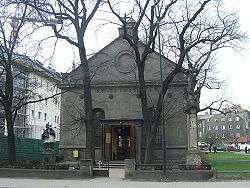
Armenian Catholics originated in what is today Armenia, Georgia and Eastern Europe. Beginning in the late 1920s, persecution caused many Armenian Catholics to emigrate. In 1991, after the fall of the Soviet Union, the Bishop of Rome, Pope John Paul II merged the communities in Georgia and Russia with those in Armenia, creating a new ordinariate of Armenia and Eastern Europe, with its residence in Gyumri. The city was not chosen by chance: Most Catholic Armenians live in the northern parts of Armenia. This has become a kind of basis for fence-mending with the coreligionists on the other side of the border.
Today Catholic Armenians of Samtskhe-Javakheti live together in Akhaltsikhe and in the nearby villages, as well as in the regions of Akhalkalaki and Ninotsminda. The communities in the last two regions, which are mainly rural, are in rather distant areas, but the most important link is the historical memory of Catholicism.
A small seminary was established in Gyumri, Armenia, in 1994; there candidates for the priesthood engage in basic studies before moving to the Pontifical College of the Armenians (established 1885) in Rome, where they pursue philosophy and theology.
There are also tens of thousands of Armenian Catholics in Russia, due to the large amount of migration from Armenia to Russia that has occurred since the collapse of the Soviet Union.
United States and Canada
Presently, around 1.5 million Armenians live in North America, of which 35,000 belong to the Armenian Catholic Church.
In the 19th century Catholic Armenians from Western Armenia, mainly from the towns and cities of Karin (Erzurum), Constantinople, Mardin etc., came to the United States seeking employment. At the end of the same century, many survivors of the Hamidian Massacres had concentrated in several U.S. cities, chiefly in New York. Catholic Armenian communities were also founded in New Jersey, Boston, Detroit, Los Angeles, and other cities of California.
Catholic Armenian educational organizations were also founded in many cities. In Philadelphia and Boston Colleges of Armenian sisters were founded, educating hundreds of children. Later, a similar college was founded in Los Angeles. Mechitarists were preoccupied with the problem of preserving Armenian identity. By the effort of Mekhitarists in Venice and Vienna, the Mkhitarian College was founded in Los Angeles.
Many Armenians came to the United States and Canada from the Middle Eastern countries of Lebanon and Syria in the 1970s and in later years. Also many Armenians immigrated from Argentina, because of the economic crisis. At the same time, many Catholic Armenians inside the United States moved to San Francisco, San Diego, Chicago, Washington D.C., Atlanta, Miami and Indianapolis.
In 2005, by Pope Benedict XVI's decision, the Catholic Exarchate of the USA and Canada was advanced to the status of a diocese. It serviced 35,000 Catholic Armenians in the United States and some 10,000 in Canada. The bishop, or eparch, of the diocese, which has jurisdiction over Canadian and American Catholics who are members of the Armenian Catholic Church, became Manuel Batakian. According to a Monday, May 23, 2011 news release by the United States Conference of Catholic Bishops, Pope Benedict XVI, named Archpriest Mikaël Antoine Mouradian, superior of the Convent of Notre Dame in Bzommar, Lebanon, as the new bishop of the Eparchy of Our Lady of Nareg in New York for Armenian Catholics. The appointment of Lebanon-born Bishop Mouradian was publicized in Washington, May 21, by Archbishop Pietro Sambi, Apostolic Nuncio to the United States.[6]
France
Next to North America, France holds the largest number of Armenian Catholics outside of the areas of the Middle East and Oriental Europe. The Eparchy of Sainte-Croix-de-Paris was established in 1960 with Bishop Garabed Armadouni as exarch. Since 1977, the eparchy has been led by Bishop Krikor Gabroyan.
There are some 30,000 Armenian Catholics in the eparchy, the headquarters of which is in Paris. The eparchy has six churches apart from the Cathedral of the Holy Cross in Paris: Arnouville-lès-Gonesse, Lyon, Marseille, Saint-Chamond, Sèvres and Valence. A community of Mekhitarist Fathers resides in Sèvres and a convent of Armenian Sisters of the Immaculate Conception runs a school in Marseille.
Demographics
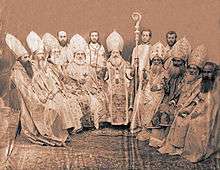
According to an 1842 article by C. W. Russell in The Dublin Review there were 150,000 Armenian Catholics worldwide.[7] However, another source, the Society for the Propagation of the Faith estimated some 40,000 Catholic Armenians in 1847.[8] In 1871 Roswell Dwight Hitchcock estimated 100,000 Catholic Armenians of the total 3-5 million Armenians.[9]
Malachia Ormanian, a historian and an Armenian Apostolic Patriarch of Constantinople, estimated 136,400 Armenian Catholics worldwide in his 1911 book: 83,500 (61%) in the Ottoman Empire, 30,000 in the Russian Empire, 15,000 in Europe (Poland, Italy, Austria), 5,000 in Bukovina and Hungary, 1,500 in Egypt and 1,400 in Persia.[10] The 1897 imperial census in Russia found 38,840 Catholic Armenians,[11] while 1914 Ottoman government statistics provided 67,838 as the number of Catholic Armenians.[12][13]
A 1971 article by United Press International (UPI) estimated the number of adherents of the Armenian Catholic Church at around 100,000.[14]
According to Annuario Pontificio, the annual directory of the Holy See, the church had 142,853 followers worldwide in 1990. The number rose to 736,956 in 2015 according to the same source.[15] However, the number is inflated due to overestimation of Catholics in Eastern Europe and Armenia (supposedly at 600,000). According to the 2011 census in Armenia there were 13,247 Catholics (of any ethnicity) in the country, far below the 600,000 figure.[16]
Independent sources estimate the number of Catholic Armenians in the early 21st century at 150,000.[1][2]
Structure
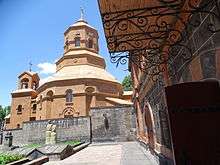

The Armenian Catholic Church is broken into Archdioceses, Eparchies, Apostolic Exarchates, Ordinariates for the Faithful of the Eastern Rite and Patriarchal Exarchates, each of which have functions similar to a diocese.
Current hierarchy
The Armenian Catholic Patriarchate of the See of Cilicia is the supreme authority of the Armenian Catholic Church. Krikor Bedros XX Gabroyan is the current Catholicos-Patriarch.
Following is a list of the jurisdictions with their number of adherents.[17]
| Archeparchies (Archdioceses) | 1990 | 2000 | 2017 |
|---|---|---|---|
| Patriarchate of Cilicia, also sole Metropolitanate as Armenian Catholic Archeparchy of Beirut, Lebanon (Patriarchal proper archdiocese) | 15,000 | 12,000 | 12,500 |
| Archeparchy of Aleppo (Halab, Beroa), Syria | 15,000 | 17,000 | 7,000 |
| Archeparchy of Baghdad, Iraq | 2,200 | 2,000 | 2,400 |
| Archeparchy of Istanbul (Constantinople), Turkey | 3,700 | 3,680 | 2,500 |
| Archeparchy of Lviv, Ukraine | N/A | N/A | 0 |
| Suffragan Eparchies in the Patriarch's Metropolitan Province of Cilicia | |||
| Ispahan, Iran | 2,200 | 2,200 | 150 |
| Alexandria (Iskanderiya) actually in Cairo, Egypt | 1,500 | 1,287 | 6,500 |
| Kameshli ((Al-)Qamishli), Syria | 4,303 | 4,000 | 3,500 |
| Other Eparchies (dioceses), in the diaspora | |||
| Eparchy of Our Lady of Nareg in the United States of America and Canada | 34,000 | 36,000 | 36,000 |
| Eparchy of Sainte-Croix-de-Paris, France | 30,000 | 30,000 | 35,000 |
| Eparchy of Saint Gregory of Narek, Buenos Aires | established in 1989 | 16,000 | 16,350 |
| Apostolic Exarchates (missionary, directly dependent on the Holy See) | |||
| Armenian Catholic Apostolic Exarchate of Latin America and Mexico | 30,000 | 12,000 | 12,000 |
| Ordinariates for the Faithful of the Eastern Rites | |||
| Greece (Athens) | 650 | 600 | 200 |
| Ordinariate for Romania (Gherla) | N/A | 1,000 | 626 |
| Eastern Europe (except Romania) (Gyumri, Armenia) | established in 1991 | 220,000 | 618,000 |
| Patriarchal Exarchates | |||
| Damascus, part of Syria | 9,000 | 8,000 | 4,500 |
| Jerusalem and Amman (Jordan & Holy Land) | N/A | 280 | 500 |
| TOTAL | 142,853 | 362,047 | 757,726 |
Titular sees
TO BE ELABORATED
Titular Metropolitan Archeparchies
Achrida (Ohrid), Pessinus, Traianopolis in Rhodope
Titular Non-metropolitan Archeparchies
Chalcedon, Colonia in Armenia, Mardin, Nisibis of the Armenians, Sebaste, Tarsus
Titular Eparchies
Adana, Amida, Anazarbus, Ancyra, Artvin, Cesarea in Cappadocia, Garin, Kharput, Marasc, Melitene, Mush, Prusa, Tokat, Trapezus
Publications
The Armenian Catholic Church produces a number of publications:
- Avedik, the official organ of the church
- Avedaper Verelk, a religious, spiritual and cultural publication of St. Gregory Armenian Catholic Church
- Avedaper, a weekly bulletin of the Armenian Catholic dioceses
- Gantch Hrechdagabedin, official publication of the Our Lady of Bzommar Convent
- Massis, a general monthly publication
- Church bulletins
The Armenian Catholic Church has presses that publish many liturgical, spiritual books, publications, pamphlets and translations from general Catholic publications.
Gallery
- Armenian Catholic parishes
 Interior of the Armenian Church in Stanyslaviv, Ukraine (1763)
Interior of the Armenian Church in Stanyslaviv, Ukraine (1763) St. Gregory the Illuminator – St. Elie Church, Debbas Square, downtown Beirut, Lebanon (1909)
St. Gregory the Illuminator – St. Elie Church, Debbas Square, downtown Beirut, Lebanon (1909)- St. Gregory the Illuminator Cathedral, Glendale, California (2001)
 Armenian Catholic Cathedral of Our Lady of Bzommar, Montevideo, Uruguay
Armenian Catholic Cathedral of Our Lady of Bzommar, Montevideo, Uruguay Armenian Catholic Patriarchate in Jerusalem (1996)
Armenian Catholic Patriarchate in Jerusalem (1996)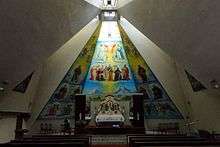 Interior view of Armenian Catholic Church (Buenos Aires)
Interior view of Armenian Catholic Church (Buenos Aires)- Armenian Catholic Church in São Paulo
See also
References
- Notes
- References
- Adalian, Rouben Paul (2010). Historical Dictionary of Armenia. Scarecrow Press. p. 233. ISBN 9780810874503.
- Tchilingirian, Hratch. "The Armenian Church: A Brief Introduction" (PDF). hygradaran. Armenian Church Library. p. 8. Archived from the original (PDF) on 23 April 2019.
According to Vatican sources, some 250,000 Armenians are members of the “Armenian Rite” of the Catholic Church (others put the number closer to 150,000) with communities in Iran, Iraq, Lebanon, Turkey, Jerusalem and the US.
- Roberson, Ronald G. "The Eastern Catholic Churches 2016" (PDF). Eastern Catholic Churches Statistics. Catholic Near East Welfare Association. Archived from the original (PDF) on 20 October 2016. Retrieved 29 November 2016.
- Armenian Catholic Church Written by: The Editors of Encyclopaedia Britannica
- The Eastern Catholic Churches: Part 2, the Armenian Rite
- "Pope Names New Eparch for Armenian Catholics In US And Canada". USCCB News Release. 21 May 2011. Archived from the original on 2011-05-25.
- Russell, C. W. (May 1842). "The Armenian Convent of San Lazzaro, at Venice". The Dublin Review. 12: 375.
- "Reviews". Evangelical Christendom: Its State and Prospects. London: Evangelical Alliance. I: 393. 1847.
- Hitchcock, Roswell Dwight, ed. (1871). "A Dictionary of Religious Denominations, Sects, Parties, and Associations". Hitchcock's New and Complete Analysis of the Holy Bible. New York: A. J. Johnson. p. 1116.
- Ormanian, Malachia (1911). Հայոց եկեղեցին և իր պատմութիւնը, վարդապետութիւնը, վարչութիւնը, բարեկարգութիւնը, արաողութիւնը, գրականութիւն, ու ներկայ կացութիւնը [The Church of Armenia: her history, doctrine, rule, discipline, liturgy, literature, and existing condition] (in Armenian). Constantinople. pp. 259–267.
- Первая Всеобщая перепись населения Российской Империи 1897 г. Под ред. Н.А.Тройницкого. т.I. Общий свод по Империи результатов разработки данных Первой Всеобщей переписи населения, произведенной 28 января 1897 года. С.-Петербург, 1905. Таблица XII. Распределение населения по вероисповеданиям. online source
- Karpat, K.H. (1985). Ottoman population, 1830-1914: demographic and social characteristics. Madison, Wis: University of Wisconsin Pres. pp. 189–190, 242.
- Shaw, Stanford J. (1978). "The Ottoman Census System and Population, 1831-1914". Nationalism and Ethnic Politics. 9 (3): 325–338. doi:10.1017/s0020743800033602.
- "Cardinal Agagianian Succumbs". Times-News. via UPI. 15 May 1971.
- "The Eastern Catholic Churches 2015" (PDF). cnewa.org. Catholic Near East Welfare Association. Archived from the original on 2017-06-07.CS1 maint: BOT: original-url status unknown (link)
- "Population Census 2011: Population (urban, rural) by Ethnicity, Sex and Religious Belief" (PDF). armstat.am. Statistical Committee of Armenia.
- "The Eastern Catholic Churches 2-008" (PDF). cnewa.org. Catholic Near East Welfare Association. Archived from the original (PDF) on 2018-10-24. Retrieved 2018-12-03.
Sources
- Frazee, Charles A. (2006) [1983]. Catholics and Sultans: The Church and the Ottoman Empire 1453-1923. Cambridge: Cambridge University Press.CS1 maint: ref=harv (link)
- Kornél, Nagy (2011). "The Catholicization of Transylvanian Armenians (1685-1715): Integrative or Disintegrative Model?". Integrating Minorities: Traditional Communities and Modernization. Cluj-Napoca: Editura ISPMN. pp. 33–56.CS1 maint: ref=harv (link)
- Stopka, Krzysztof (2016). Armenia Christiana: Armenian Religious Identity and the Churches of Constantinople and Rome (4th-15th century). Kraków: Jagiellonian University Press.CS1 maint: ref=harv (link)
External links
| Wikimedia Commons has media related to Armenian Catholic Church. |
- Armenian Catholic Church
- GCatholic
- Armenian Catholic Eparchy of USA and Canada
- Armenian Catholic Community in Australia
- Armenian Catholic Church in Lebanon
- Armeniapedia – Armenian Catholic Church
- Article on the Armenian Catholic Church by Ronald Roberson on the CNEWA web site
- St. Mark's Armenian Catholic Church, near Philadelphia, Pennsylvania
- CWR -- St. Gregory of Narek: Was the New Doctor of the Church a Catholic?
- Armenian Religious Relations and the Roman Catholic Church
- Pope Benedict XIV, Allatae Sunt (On the observance of Oriental Rites), Encyclical, 1755
- Common Declaration of Pope John Paul II and Catholicos Karekin I, 1996
- Common Declaration of John Paul II and Aram I Keshishian, 1997
- John Paul II to Karekin I, 1999
- Joint Declaration signed by John Paul II and Karekin II, 2000
- Greeting by Pope Benedict XVI to His Holiness Aram I, 2008
- Dialogue and Joint Declarations with the Roman Catholic Church
